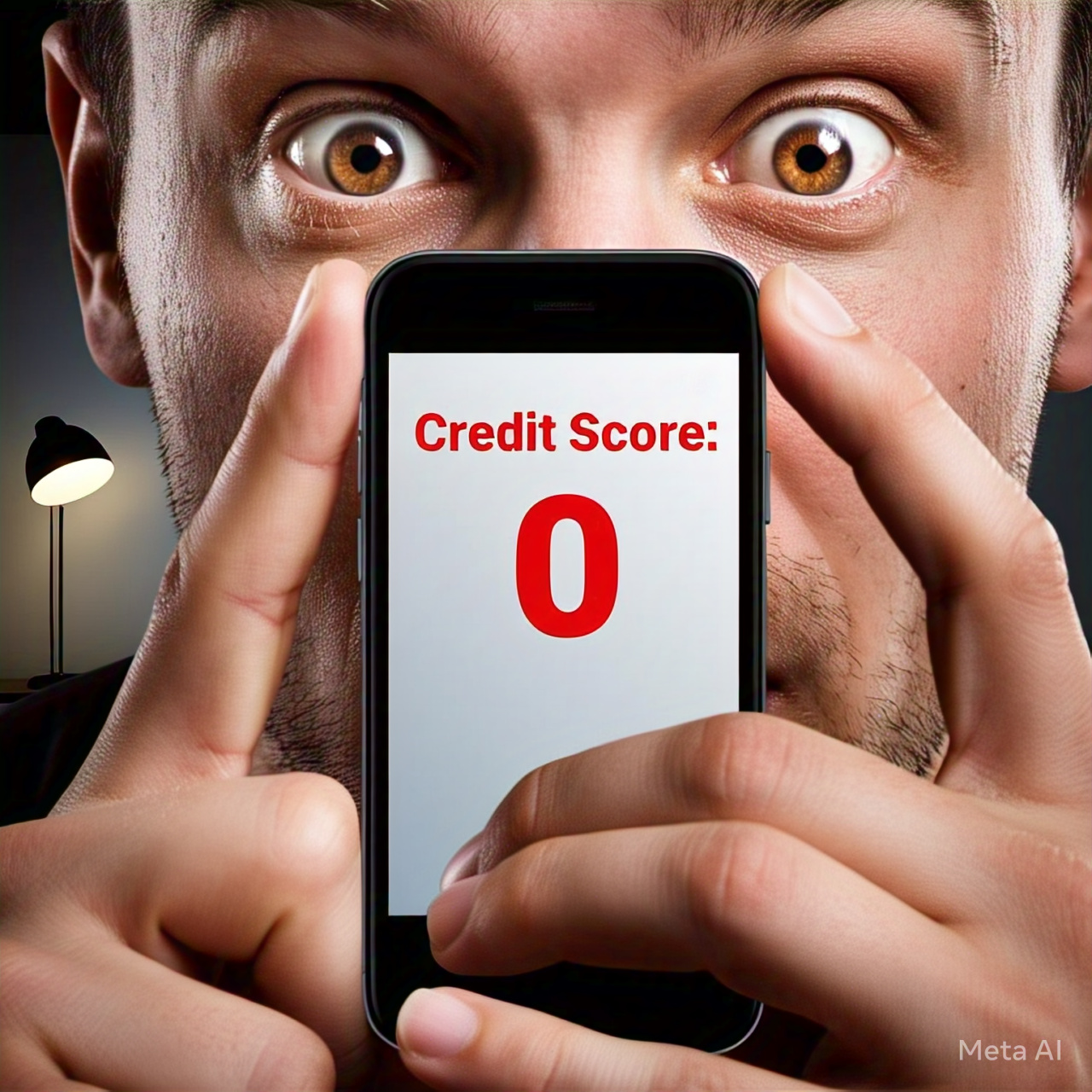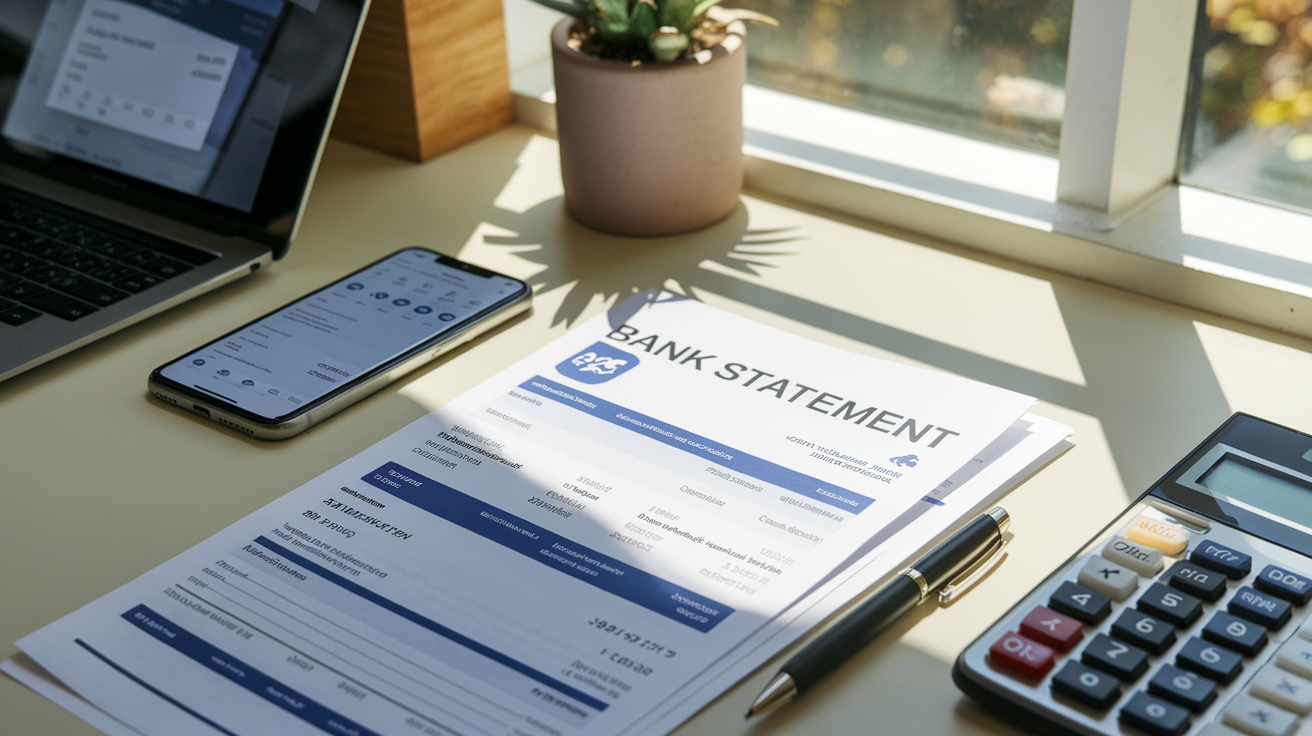Ever found yourself needing to prove you actually have money, only to realize your bank statement looks like it was designed by a 5-year-old with a calculator? You’re not alone.
Creating a clean, professional bank statement isn’t just about looking fancy – it could be the difference between getting approved for that apartment or being shown the door.
In this guide, I’ll walk you through exactly how to make a good bank statement that landlords, lenders, and financial institutions will actually take seriously.
The truth is, most people get rejected for loans and rentals not because of their financial situation, but because their documentation looks sketchy. But what exactly makes a bank statement “good” versus one that raises red flags?
What is a bank statement?

A bank statement is your money’s personal story. It’s that detailed record from your bank showing exactly what happened with your cash during a specific period – usually a month.
Think of it as the ultimate financial reality check. Those dinner splurges, forgotten subscriptions, and that sweet paycheck deposit – they’re all there in black and white. No hiding from your spending habits when the statement arrives!
Bank statements typically show:
-
Your personal info and account details
-
The statement period (like May 1-31, 2025)
-
Starting and ending balances
-
Every single transaction that hit your account
-
Any fees or interest you earned or paid
These days, most statements come digitally. You’ll get an email notification when your latest statement is ready to view in your online banking portal. Some banks still mail paper statements if you prefer that old-school approach.
Why should you care about these financial snapshots? They’re crucial for:
-
Catching unauthorized charges before they become a bigger problem
-
Tracking your actual spending (not what you think you spent)
-
Preparing your taxes without the last-minute scramble
-
Applying for loans when you need to prove your income
-
Keeping an eye on your financial health overall
Your bank statement doesn’t judge your spending choices (that’s what family members are for). It simply presents the facts about your financial activity during that period.
What does a bank statement contain?

Bank Account Information
Your bank statement is packed with essential data about your account’s activity. At the top, you’ll find your name, address, account number (often partially hidden for security), and the statement period dates. Think of this as your financial ID badge—it proves this statement belongs to you.
Transaction Details
The meat of your statement is the transaction list. This chronological record shows every penny that went in and out of your account:
-
Deposits: Your paycheck, cash deposits, transfers in, and other money coming your way
-
Withdrawals: ATM transactions, debit card purchases, bill payments, and checks you’ve written
-
Electronic transactions: Direct deposits, automatic payments, and online transfers
-
Fees: Monthly service charges, ATM fees, overdraft charges, and other bank costs
Each transaction includes the date, description (where the money came from or went to), and the amount.
Account Summary
This section gives you the big picture at a glance:
-
Opening balance (what you had at the start of the statement period)
-
Total deposits and credits
-
Total withdrawals and debits
-
Closing balance (what you have now)
Additional Information
Bank statements also typically include:
-
Interest earned (if it’s an interest-bearing account)
-
Images of processed checks
-
Minimum balance requirements
-
Notice of upcoming changes to terms or fees
-
Customer service contact information
Most statements now come with a message encouraging you to go paperless—a hint at how banks are pushing digital services forward.
How to get your bank statement

Online Banking: The Digital Gateway
Getting your bank statement has never been easier. Most banks now offer online access to your statements 24/7. Just log into your bank’s website, navigate to the statements section, and voilà – your financial history at your fingertips. No more waiting for paper statements to arrive in the mail or standing in line at the bank.
The best part? You can typically access statements from the past 12-24 months instantly. Some banks even let you view transactions from years ago.
Mobile Banking Apps: Statements On-The-Go
Your smartphone is now your personal banking assistant. Nearly every bank offers a mobile app where you can view, download, and sometimes even annotate your statements.
Want to check last month’s statement while waiting for coffee? Just a few taps away. Most apps also let you export statements as PDFs or spreadsheets for your records or budgeting tools.
Visiting Your Branch
Old school still works. If you prefer face-to-face interaction, visiting your local branch is always an option. A teller can print your statements on demand, though some banks may charge a small fee for this service.
Pro tip: Call ahead to check if you need specific identification or if there are any fees for printed statements.
ATM Options
Many modern ATMs now offer mini-statements – abbreviated versions of your account activity. While these typically show only recent transactions rather than full statements, they’re handy for quick balance checks and transaction verification when you’re out and about.
Request by Mail or Phone
Not tech-savvy? No problem. Most banks still allow you to request statements by calling their customer service line or submitting a mail request. Just be prepared to verify your identity.
How to use the bank statement
Making the Most of Your Bank Statement
Bank statements are goldmines of financial information, not just boring paperwork. Once you’ve got your statement in hand, here’s how to actually use it to your advantage.
Track Your Spending Habits
Your bank statement reveals patterns you might not even realize exist. Comb through those transactions and group them by category:
-
Food and dining
-
Transportation
-
Entertainment
-
Bills and utilities
Notice you spent $300 at restaurants last month? That might explain why your savings goal seems stuck. This simple analysis helps spot areas where your money is leaking without you noticing.
Spot Unauthorized Transactions
Identity theft happens to the best of us. Your bank statement is your first line of defense. Circle any transactions you don’t recognize and contact your bank immediately. The faster you flag suspicious activity, the better your chances of getting your money back.
Budget Planning
Your statement is basically a ready-made budget template. Use last month’s statement to plan next month’s spending:
-
Calculate your average monthly income
-
Identify fixed expenses (rent, car payment)
-
See what you typically spend on variable costs
-
Adjust where needed
Tax Preparation
Come tax season, your bank statements become your best friend. They help track:
-
Charitable donations
-
Business expenses
-
Medical costs
-
Educational expenses
Save yourself hours of stress by flagging these transactions throughout the year rather than scrambling at the last minute.
Verify Automatic Payments
Subscriptions have a sneaky way of continuing long after you’ve stopped using the service. Your bank statement helps catch these forgotten charges. Review all recurring payments monthly and cancel anything you no longer use or need.
How to dispute a transaction on the bank account statement

You spotted a weird charge on your bank statement, and now you’re wondering what to do. Don’t panic! Disputing transactions is a common process, but you need to act quickly and know the rules.
The first thing to understand is that banks have systems in place specifically for these situations. Whether it’s an unauthorized purchase, a double charge, or a subscription you canceled but still got billed for – you have rights as a consumer.
To dispute a transaction:
-
Contact your bank immediately – most offer online dispute forms, phone support, or in-branch assistance
-
Identify the specific transaction you’re questioning
-
Provide evidence if you have it (receipts, correspondence, etc.)
-
Follow up if you don’t hear back within the promised timeframe
The key is documenting everything. Take screenshots, note down who you spoke with, and save confirmation numbers. This paper trail can be crucial if the dispute gets complicated.
A. Time limit for disputes
Here’s the critical part most people miss – you don’t have forever to file a dispute. The clock starts ticking the moment that statement hits your inbox.
For most banks, you have 60 days from when your statement was made available to report unauthorized transactions. This timeframe is established by Regulation E, which governs electronic fund transfers.
| Transaction Type | Typical Time Limit | Best Practice |
|---|---|---|
| Debit card purchases | 60 days from statement | Report within 2 days |
| Credit card charges | 60 days from statement | Report within 30 days |
| ACH transactions | 60 days from statement | Report within 1 week |
Wait too long, and the bank might deny your claim outright. And honestly, the sooner you report issues, the more seriously banks take them and the faster they get resolved.
Some banks offer more generous windows, but don’t count on it. Check your account terms or call customer service to confirm your specific bank’s policies.
Should bank account statements be kept?

Absolutely Keep Your Bank Statements (But Maybe Not All of Them)
Bank statements aren’t just boring financial documents. They’re your financial timeline – proof of what happened with your money and when.
But do you need to hang onto every single one forever? Nope.
The IRS recommends keeping tax-related documents for at least 3-7 years. Since bank statements can support tax claims, that’s a good minimum. But certain statements deserve special treatment:
-
Statements with major purchases: Keep these longer, especially for warranty items, insurance claims, or tax deductions
-
Proof of mortgage or loan payments: Save these until the loan is fully paid
-
Business-related statements: Hold onto these for 7+ years
Digital statements have made storage way easier. No more stuffed filing cabinets! Most banks keep your statements accessible online for 12-24 months, but don’t rely on this as your only system.
Digital vs. Physical Storage
Here’s what works best for most people:
| Storage Type | Pros | Cons |
|---|---|---|
| Digital (encrypted) | Space-saving, searchable, environmentally friendly | Requires backup systems, potential security concerns |
| Physical | No tech required, tangible proof | Fire/flood risk, takes physical space, paper degrades |
| Hybrid approach | Best of both worlds | Requires maintaining two systems |
Smart move? Set calendar reminders for statement review and purging outdated ones. Just shred physical statements (don’t just toss them) and permanently delete digital files when they’re no longer needed.
Your future self will thank you when you need to track down that big purchase from three years ago!
Alternative banking services

Digital Banking Alternatives
Banking has evolved far beyond traditional brick-and-mortar institutions. If you’re looking to create a more effective bank statement system for yourself, exploring alternative banking services might be your best move.
Neobanks are changing the game with their paperless approach. These digital-only banks like Chime, Revolut, and N26 offer sleek interfaces and real-time transaction updates. Their statements are typically more visual and categorize spending automatically—making it infinitely easier to track where your money’s going.
Prepaid Cards and Money Management Tools
Prepaid cards provide another viable alternative. Services like Netspend or Green Dot let you load money and use it like a debit card, but with statements that are super straightforward. No surprise fees or complicated entries—just what you spent and where.
Money management apps like Mint or YNAB sync with your accounts and create custom reports that blow traditional bank statements out of the water. They transform confusing transaction codes into clear merchant names and categories, giving you a statement that actually makes sense.
Credit Unions Worth Considering
Credit unions often deliver more user-friendly bank statements than big banks. They’re member-owned and typically invest more in clear communication. Many credit unions now offer enhanced digital statements with visual spending breakdowns and plain-language transaction descriptions.
The whole point of a bank statement is to help you manage your money, right? So why settle for confusing documents when these alternatives provide clearer, more actionable information that helps you take control of your finances?

The Essential Guide to Bank Statements
Your bank statement serves as a financial snapshot that plays a crucial role in managing your finances effectively. Throughout this guide, we’ve explored what bank statements are, their contents, how to access them, and the proper ways to utilize this important document. We’ve also covered the steps for disputing incorrect transactions and best practices for storing your statements securely. Whether you’re tracking expenses, preparing for tax season, or verifying your financial activity, understanding how to properly use your bank statement is a fundamental skill in personal finance management.
As banking continues to evolve, remember that traditional bank statements are just one option among many financial tracking tools. Alternative banking services offer different approaches to monitoring your finances, often with added convenience and features. Regardless of which banking method you choose, regularly reviewing your financial statements remains one of the most effective ways to maintain control of your money, spot errors quickly, and make informed financial decisions. Take charge of your financial health today by putting these bank statement management skills into practice.



